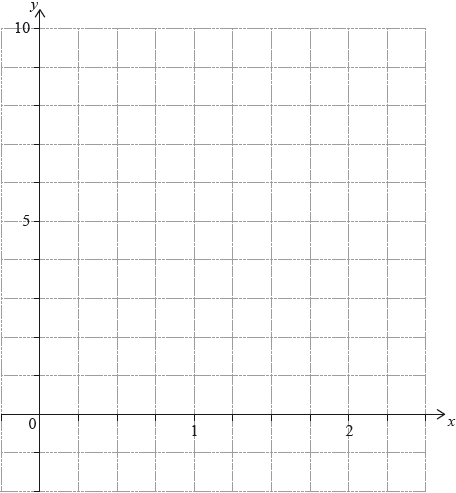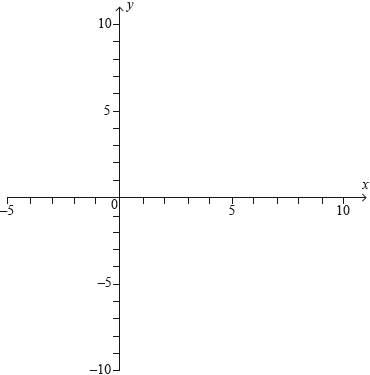| Date | May 2019 | Marks available | 2 | Reference code | 19M.2.SL.TZ1.T_4 |
| Level | Standard Level | Paper | Paper 2 | Time zone | Time zone 1 |
| Command term | State | Question number | T_4 | Adapted from | N/A |
Question
Consider the function ,
The function , , models the path of a river, as shown on the following map, where both axes represent distance and are measured in kilometres. On the same map, the location of a highway is defined by the function .
The origin, O(0, 0) , is the location of the centre of a town called Orangeton.
A straight footpath, , is built to connect the centre of Orangeton to the river at the point where .
Bridges are located where the highway crosses the river.
A straight road is built from the centre of Orangeton, due north, to connect the town to the highway.
State the domain of .
Find the distance from the centre of Orangeton to the point at which the road meets the highway.
This straight road crosses the highway and then carries on due north.
State whether the straight road will ever cross the river. Justify your answer.
Markscheme
0 < < (A1)(A1)
Note: Award (A1) for both endpoints correct, (A1) for correct mathematical notation indicating an interval with two endpoints. Accept weak inequalities. Award at most (A1)(A0) for incorrect notation such as 0 − 0.5 or a written description of the domain with correct endpoints. Award at most (A1)(A0) for 0 < < .
[2 marks]
(M1)
1.5 (km) (A1)(G2)
[2 marks]
domain given as (but equation of road is ) (R1)
OR
(equation of road is ) the function of the river is asymptotic to (R1)
so it does not meet the river (A1)
Note: Award the (R1) for a correct mathematical statement about the equation of the river (and the equation of the road). Justification must be based on mathematical reasoning. Do not award (R0)(A1).
[2 marks]



